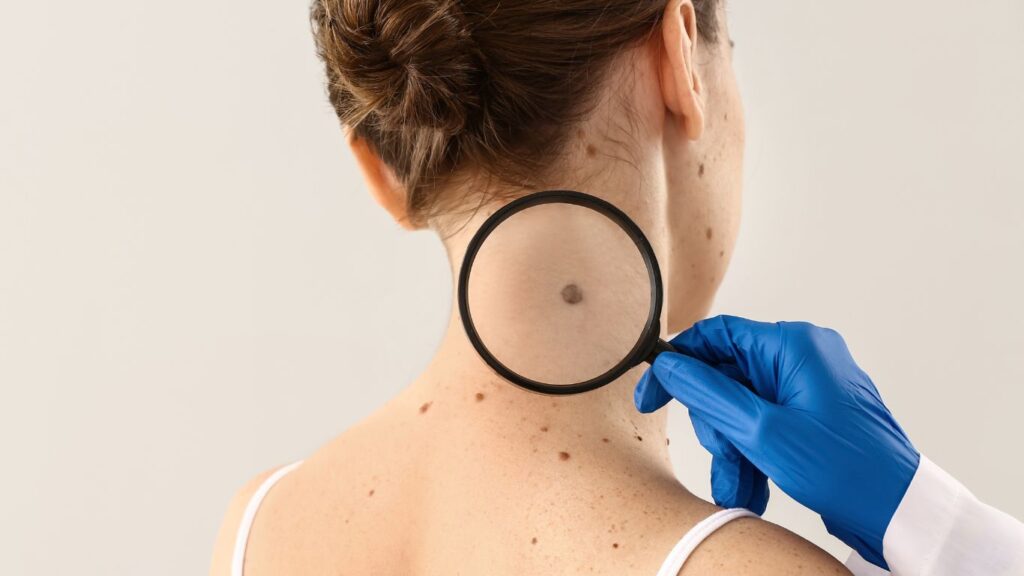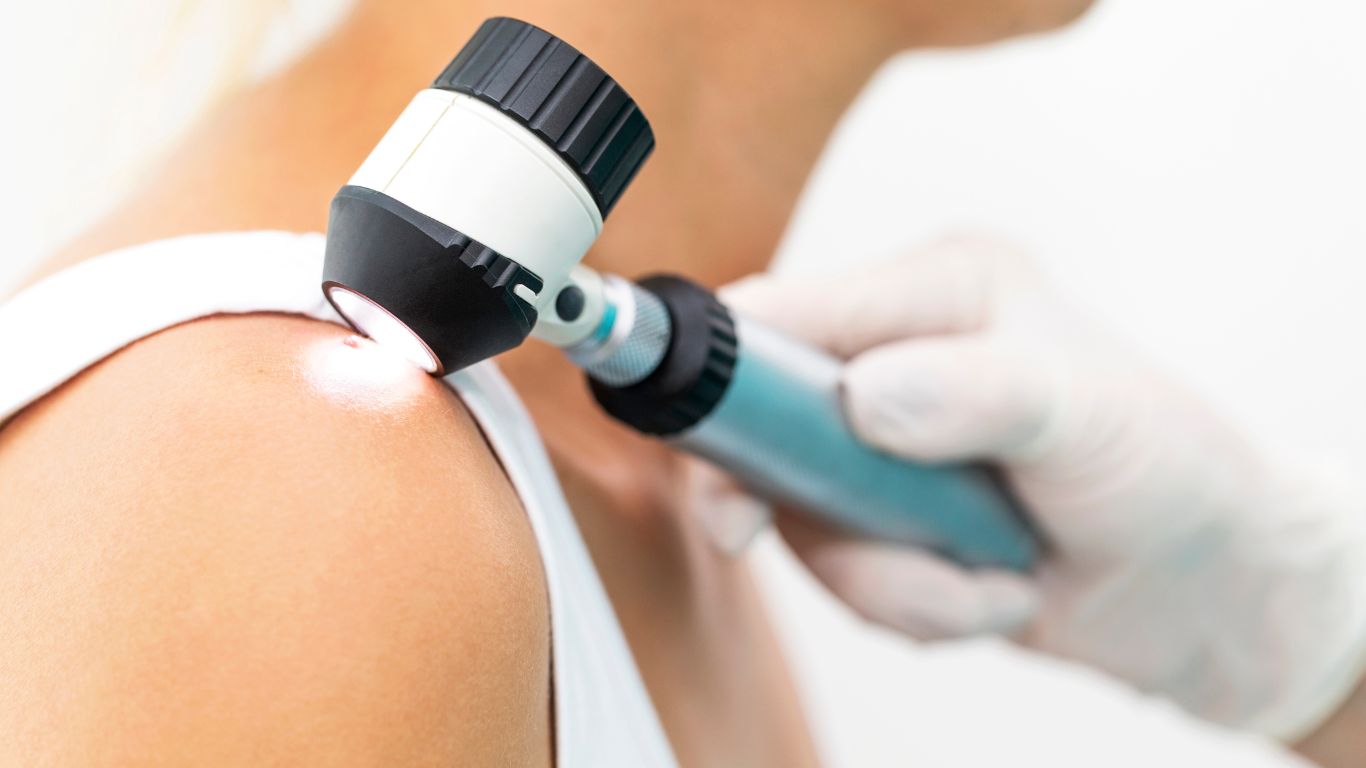Skin cancer is one of the most common cancers affecting Australians, with the country experiencing some of the highest rates globally. Understanding the risks, signs, and treatment options can save lives. In this comprehensive guide, we cover key facts and information to help you stay proactive about your skin health.
Recognising the Signs of Skin Cancer
Skin cancer can appear in various forms, depending on the type and location. It may be subtle, which is why regular checks are important. Common appearances include:
- New spots or growths that don’t heal
- Moles that change in size, colour, shape, or texture
- Flat, scaly patches of skin
- Lumps that may be shiny, pearly, red, or translucent
Lesions that bleed, itch, or crust over
It’s important to become familiar with your skin and report any new or changing spots to your doctor promptly.
Can People With Dark Skin Get Skin Cancer?
Yes, individuals of all skin tones can develop skin cancer. However, it’s a dangerous myth that people with dark skin are immune. In fact, skin cancer in people with darker skin is often diagnosed at later stages, leading to worse outcomes.
Can Skin Cancer Appear on Areas Not Exposed to the Sun?
Although UV exposure is a leading cause, skin cancer can also develop in areas that are not regularly exposed to sunlight, including:
- Under fingernails and toenails
- Genital and anal areas
- Inside the mouth or nose
- Palms and soles (particularly in acral lentiginous melanoma)
That’s why full-body skin checks matter—skin cancer can develop even in areas that aren’t usually exposed to the sun.
Types of Skin Cancer
There are three main types of skin cancer:
- Basal Cell Carcinoma (BCC): The most common form, usually slow-growing and less likely to spread. Appears as pearly or waxy bumps, often on the face or neck.
- Squamous Cell Carcinoma (SCC): Typically appears as red, scaly patches or firm nodules. More likely to spread than BCC.
- Melanoma: The most aggressive type, arising in existing moles or appearing as a new dark spot. Early detection is critical as melanoma can spread rapidly.
Other rare types include Merkel cell carcinoma and Kaposi sarcoma.

The ABCDE Rule for Identifying Suspicious Moles
Melanoma is the most serious form of skin cancer, and recognising early signs is crucial for effective treatment. Health professionals often use the ABCDE guide to help identify changes in moles or pigmented lesions that may be concerning:
- A – Asymmetry: One half of the mole or spot does not match the other in shape or appearance.
- B – Border: The edges are uneven, irregular, blurred, or jagged.
- C – Colour: The lesion contains multiple colours or shades, including brown, black, tan, red, white, or blue.
- D – Diameter: The spot is larger than 6 millimetres (about the size of a pencil eraser), though melanomas can be smaller.
- E – Evolving: The mole is changing in size, shape, colour, or texture, or begins to itch, bleed, or crust.
Monitoring your skin regularly and being aware of these signs can support early detection. If you notice any changes or have concerns about a spot on your skin, consult your skin doctor or local GP near you. Early diagnosis significantly improves treatment outcomes.
Differences Between Sunspots and Skin Cancer
Sunspots (also called liver spots or solar lentigines) are flat, brown, and harmless patches caused by sun exposure. In contrast, skin cancers:
- May grow or change shape
- Could have uneven borders or multiple colours
- Might bleed, itch, or crust
- Don’t go away over time
If you’re unsure whether a spot is harmless or something more serious, it’s best to get it checked by a doctor or skin clinic.
Common Risk Factors
Several factors can increase your risk of developing skin cancer, including:
- Excessive UV exposure (from sun or solariums)
- Fair skin, red or blonde hair, and light eyes
- History of sunburn, especially blistering burns
- Family or personal history of skin cancer
- Having many or atypical moles
- A weakened immune system (e.g., from medications or illness)
Knowing your personal risk can help you take proactive steps to prevent skin damage.
How Skin Cancer Is Diagnosed
Diagnosis begins with a clinical skin examination. If your GP or skin doctor sees something suspicious, they may recommend:
- Dermatoscopy: A close-up examination using a dermatoscope
- Skin biopsy: A sample of the lesion is taken and sent to a lab to determine whether it is cancerous
Early diagnosis is key. Skin cancers identified early are generally easier to treat and have better outcomes.
Available Treatment Options
Treatment depends on the type, size, and stage of the skin cancer. Common treatment options include:
- Surgical removal (excision): Standard treatment for most skin cancers
- Cryotherapy: Freezing off abnormal cells with liquid nitrogen
- Topical creams: Effective for superficial cancers like some BCCs
- Radiation therapy: Used for cancers in difficult-to-operate areas
- Immunotherapy and targeted therapy: Primarily for advanced melanoma
Your doctor will discuss the most suitable approach based on your specific case.
Simple Steps to Prevent Skin Cancer
Skin cancer prevention involves protecting your skin year-round. Tips include:
- Apply SPF 30+ (or higher) broad-spectrum sunscreen daily
- Wear hats, sunglasses, and long-sleeved clothing outdoors
- Seek shade during peak UV hours (10am–3pm)
- Avoid tanning beds
- Schedule annual professional skin checks
- Monitor your own skin for changes monthly
Prevention and early detection are the most effective ways to reduce skin cancer risk.
Is Skin Cancer Hereditary?
While most skin cancers result from sun damage, genetics can play a role. A family history of melanoma or other skin cancers increases your risk.
Is Skin Cancer Treatable If Detected Early?
Yes, most skin cancers are highly treatable when detected early. Treatment is often simpler and less invasive, and the risk of recurrence or spread is lower. Even melanoma has a high cure rate if caught in its earliest stages. Regular skin checks and self-monitoring play a vital role in early detection.
Notice a Skin Change? Book a Skin Check Today — Early Detection Saves Lives
Skin cancer is common but largely preventable and treatable if addressed early. Australians should be especially vigilant due to high UV levels year-round. Know your skin, protect it, and don’t delay getting anything unusual checked by a doctor. At Tewantin Medical Centre, our experienced GPs provide thorough skin checks in Noosa and partner with Coastal Skin & Laser to offer on-site treatments, including cryotherapy and minor skin cancer procedures. Early action could save your life.





